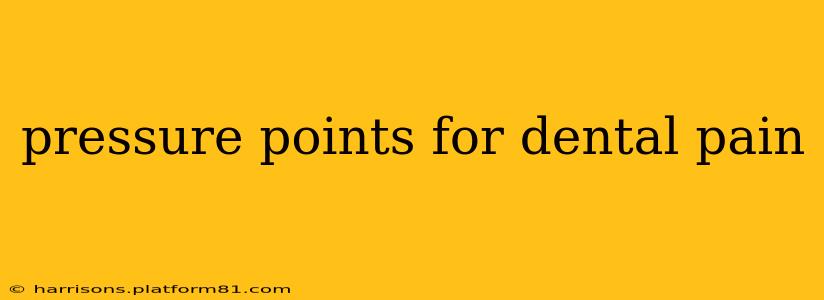Dental pain can be excruciating, often striking unexpectedly and disrupting daily life. While professional dental care is crucial for diagnosing and treating the underlying cause, exploring pressure point techniques can offer temporary relief and manage discomfort until you can see a dentist. This article will delve into the science behind pressure point therapy and guide you through specific points that may help alleviate dental pain. We’ll also address common questions surrounding this approach.
Understanding Pressure Point Therapy (Acupressure)
Pressure point therapy, also known as acupressure, is a form of alternative medicine rooted in traditional Chinese medicine. It involves applying pressure to specific points on the body, believed to stimulate energy flow (Qi) and promote healing. While the scientific evidence supporting acupressure for dental pain is limited, many find it provides temporary relief from discomfort. It's important to remember that this is not a replacement for professional dental care.
Key Pressure Points for Dental Pain Relief
Several pressure points may help alleviate dental pain. Remember to apply gentle, firm pressure, avoiding any sharp or jarring movements. Hold each point for 1-3 minutes, and repeat as needed, up to three times a day. If the pain worsens, stop immediately and consult a dentist.
1. LI4 (Large Intestine 4): The Hegu Point
This point is located between the thumb and index finger, on the fleshy part of the hand. It's considered a powerful point for pain relief in general, and many find it particularly helpful for headaches and facial pain, including toothaches.
2. GB7 (Gallbladder 7):
Found behind the ear, this point can be located by placing your fingers just above the earlobe and pressing gently behind the jaw bone. This point is believed to relieve pain in the head and neck region.
3. GB20 (Gallbladder 20):
Situated at the back of the head, just below the skull’s base, this point is frequently used for headaches and upper body tension. Since tension in the jaw and head can exacerbate dental pain, targeting this point might offer some relief. Be careful and gentle when applying pressure to this area.
4. SJ17 (Small Intestine 17):
Located on the cheekbone, approximately one finger-width below the outer corner of the eye, this point could offer relief from pain in the cheeks and teeth.
How Effective Are Pressure Points for Dental Pain?
The effectiveness of pressure points for dental pain varies greatly among individuals. While some find significant relief, others experience little to no change. The pain's underlying cause significantly impacts the effectiveness of this technique. For example, pressure points are unlikely to help with severe infections requiring antibiotics or a root canal.
What if Pressure Points Don't Work?
If you've tried pressure point therapy and haven't found relief, or if your dental pain persists or worsens, it's crucial to seek professional dental care immediately. Underlying conditions like cavities, abscesses, or temporomandibular joint (TMJ) disorders may require specific treatments that only a dentist can provide.
Can Pressure Points Help Prevent Dental Pain?
While pressure points can offer temporary relief, they cannot prevent dental pain. Maintaining good oral hygiene, regular dental checkups, and a healthy diet are essential for preventing dental problems.
When Should I See a Dentist for Dental Pain?
You should consult a dentist immediately if you experience:
- Severe or persistent pain: Pain that doesn't respond to over-the-counter pain relievers or home remedies.
- Swelling: Swelling in the gums, face, or neck.
- Fever: A high temperature accompanied by dental pain.
- Difficulty swallowing or breathing: This can indicate a severe infection.
Remember, pressure point therapy is a complementary approach, not a replacement for professional dental care. It’s always best to consult with your dentist for diagnosis and treatment of any persistent dental pain.
